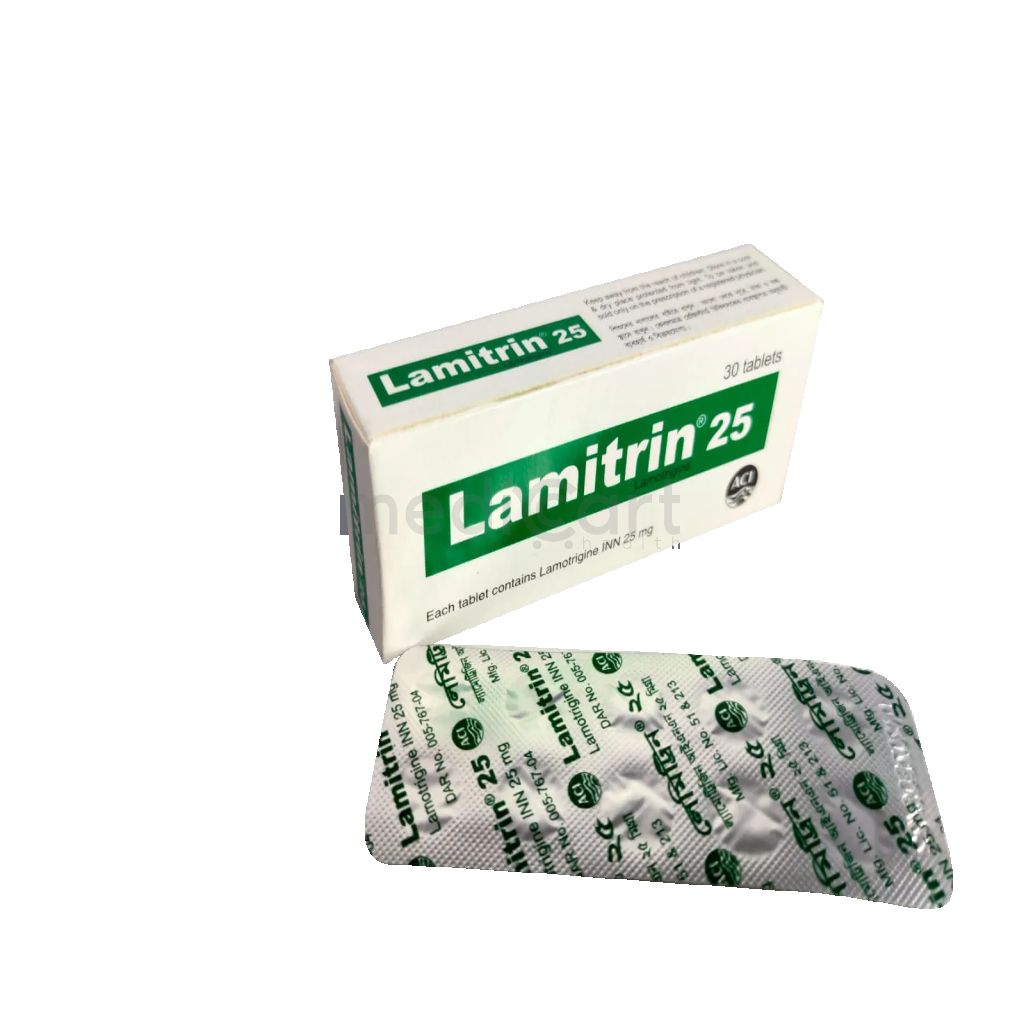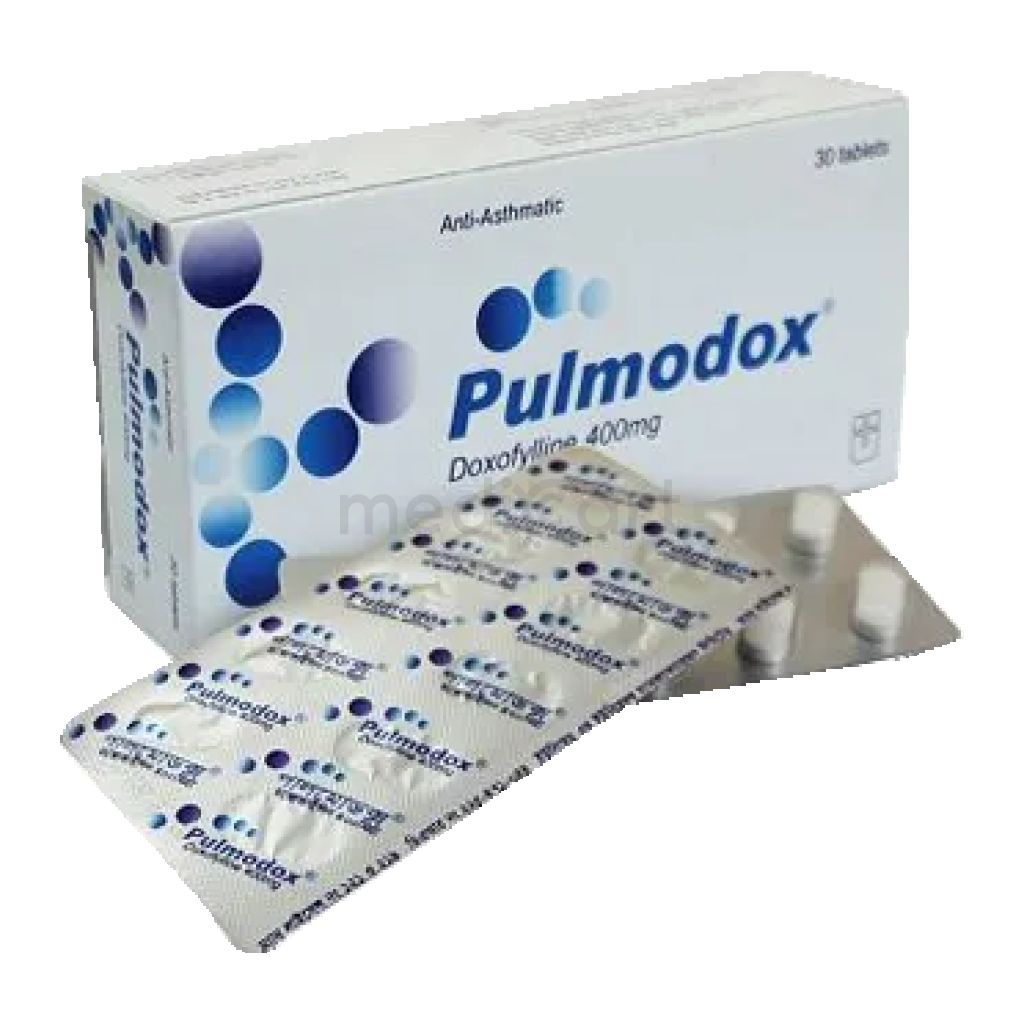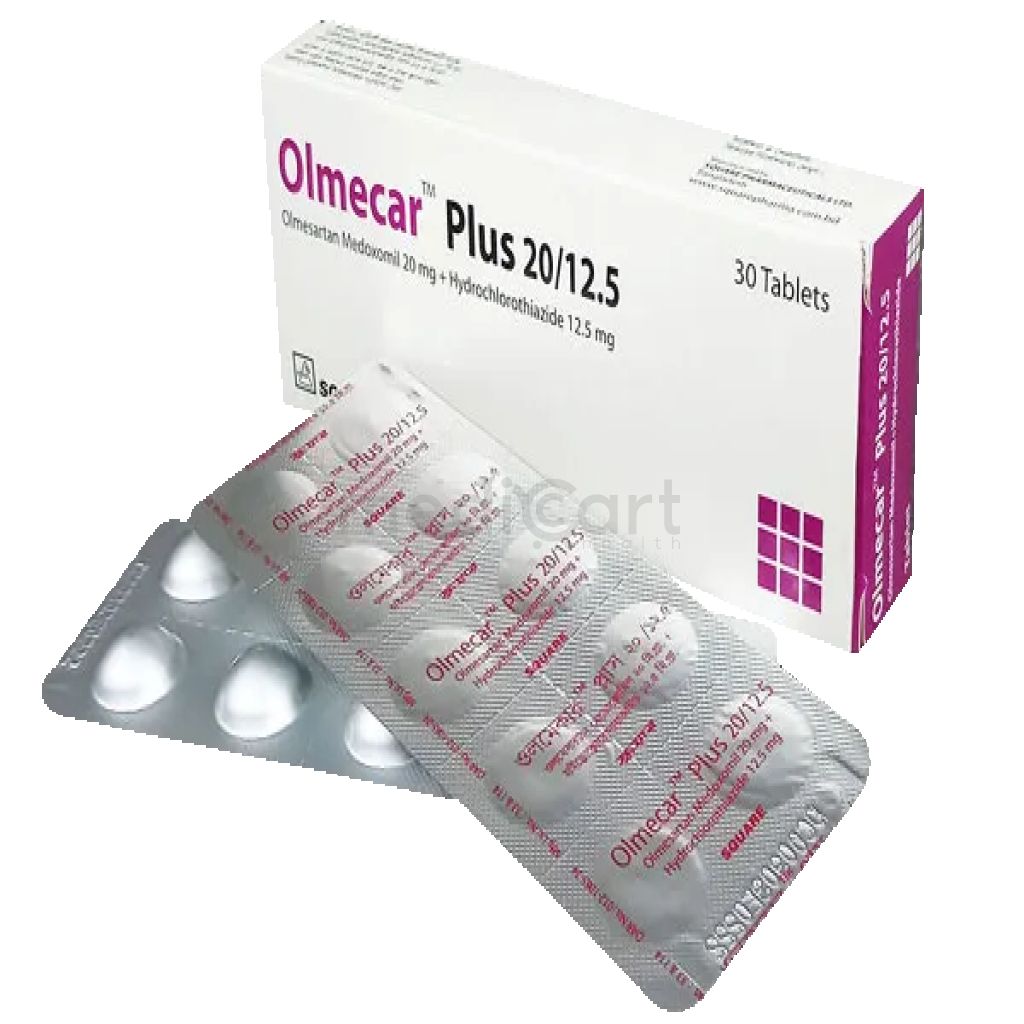

Lamogin 50 - 50 mg
Tablet
Pack Size :
10 Tablet x 1 Strip
Generics :
Lamotrigine
Manufacturer :
Incepta Pharmaceuticals Ltd.
Best Price *
TK
180.00
* Delivery will be done in Dhaka city only.
More Information About - Lamogin 50 - 50 mg
Description
Generic Name
LamotriginePrecaution
Hepatic or renal impairment. Closely monitor patient. Monitor children's body wt. Advise patient to report any hypersensitivity reaction. Avoid abrupt withdrawal unless severe skin reactions have developed. May impair ability to drive or operate machinery. Pregnancy and lactation. Serious skin rashes, Blood Dyscrasias, Suicidal Behavior, Aseptic Meningitis can occur in both adult and pediatric population. Lactation: Distributed into human breast milk; caution advisedIndication
Epilepsy,?adjunctive therapy in patients aged 2 years and older: ? partial-onset seizures. ? primary generalized tonic-clonic seizures. ? generalized seizures of Lennox-Gastaut syndrome Epilepsy,?monotherapy in patients aged 16 years and older Bipolar disorderContra Indication
Hypersensitivity.Dose
N/ASide Effect
>10% Dizziness (38%),Diplopia (26-30%),Headache (29%),Ataxia (22%),Blurred vision (16-20%),Rhinitis (11-15%),Somnolence (14%) 1-10% Insomnia (6-10%),Fatigue (8%),Chest pain (5%),Peripheral edema (2-5%),Suicidal ideation (2-5%),Dermatitis (2-5%),Dry skin (2-5%),Increased libido (2-5%),Rectal hemorrhage (2-5%),Weakness (2-5%),Agitation (1-5%),Dysarthria (1-5%),Edema (1-5%),Fever (1-5%),Migraine (1-5%),Abnormal thoughts (1-5%),Urinary frequency (1-5%),Tremor (4%) Frequency Not Defined Palpitations,Anxiety,Chills,Depression,Decreased memory,Emotional lability,Incoordination,Malaise,Seizure exacerbation,Vertigo,Pruritus,Rash,Amenorrhea,Hot flashes,Abdominal pain,Constipation,Diarrhea,Dyspepsia,Nausea,Vomiting,Arthralgia,Neck pain,Cough,Flu syndrome,Infection,Vaginitis,Nystagmus Potentially Fatal: Stevens-Johnson syndrome and toxic epidermal necrolysis.Pregnancy Category
Name : Not Classified
Description
FDA has not yet classified the drug into a specified pregnancy category.Mode of Action
Lamotrigine inhibits voltage-sensitive sodium channels, thereby stabilising neuronal membranes and consequently inhibiting pathological release of excitatory amino acids (e.g. glutamate and aspartate). These amino acids play a role in the generation and spread of epileptic seizures.Interaction
Metabolism enhanced by enzyme-inducing drugs e.g. phenytoin, carbamazepine, phenobarbitone, primidone, rifampicin, ethinyloestradiol/levonorgestrel combination. Metabolism reduced by sodium valproate.Pregnancy Category Note
Pregnancy Data from several prospective pregnancy exposure registries and epidemiological studies of pregnant women have not detected increased frequency of major congenital malformations or consistent pattern of malformations among women exposed to lamotrigine compared with the general population; the majority of exposure data are from women with epilepsy As with other AEDs, physiological changes during pregnancy may affect lamotrigine concentrations and/or therapeutic effect; there have been reports of decreased lamotrigine concentrations during pregnancy and restoration of pre-pregnancy concentrations after delivery; dose adjustments may be necessary to maintain clinical response Animal data In animal studies, administration of lamotrigine during pregnancy resulted in developmental toxicity (increased mortality, decreased body weight, increased structural variation, neurobehavioral abnormalities) at doses lower than those administered clinically Drug decreased fetal folate concentrations in rats, an effect known to be associated with adverse pregnancy outcomes in animals and humans Lactation Drug is present in milk from lactating women receiving therapy; neonates and young infants are at risk for high serum levels because maternal serum and milk levels can rise to high levels postpartum if lamotrigine dosage has been increased during pregnancy but is not reduced to pre-pregnancy dosage after delivery Glucuronidation is required for drug clearance; glucuronidation capacity is immature in the infant and this may also contribute to level of lamotrigine exposure; events including rash, apnea, drowsiness, poor sucking, and poor weight gain (requiring hospitalization in some cases) reported in infants who have been human milk-fed by mothers using lamotrigine; whether or not these events were caused by lamotrigine is unknown; no data are available on effects of drug on milk production Developmental and health benefits of breastfeeding should be considered along with mother?s clinical need for therapy and any potential adverse effects on breastfed infant from drug or from the underlying maternal condition Human milk-fed infants should be closely monitored for adverse events resulting from lamotrigine; measurement of infant serum levels should be performed to rule out toxicity if concerns arise; human milk-feeding should be discontinued in infants with lamotrigine toxicityAdult Dose
Oral Epilepsy Adult: Initially, 25 mg once daily for 2 wk followed by 50 mg once daily for 2 wk; thereafter, increase the dose by a max of 50-100 mg every 1-2 wk to usual maintenance doses of 100-200 mg daily, as a single dose or in 2 divided doses. Some patients may require up to 500 mg daily. Adjunct in epilepsy Adult: With valproate: Initially, 25 mg on alternate days for 2 wk followed by 25 mg once daily for 2 wk; thereafter, increase by a max of 25-50 mg every 1-2 wk; usual maintenance doses: 100-200 mg daily in 1-2 divided doses. With enzyme-inducing antiepileptics but not with valproate: 50 mg once daily for 2 wk followed by 50 mg bid for 2 wk; thereafter, increase by a max of 100 mg every 1-2 wk; usual maintenance doses: 200-400 mg/day in 2 divided doses; up to 700 mg/day in some patients. With oxcarbazepine but no enzyme-inducing or -inhibiting antiepileptics: 25 mg once daily for 2 wk followed by 50 mg once daily for 2 wk; thereafter increase dose by a max of 50-100 mg every 1-2 wk; usual maintenance doses: 100-200 mg daily in 1-2 divided doses; up to 500 mg daily in some patients. Bipolar disorder Adult: Monotherapy: Initially, 25 mg once daily for 2 wk followed by 50 mg once daily for 2 wk; thereafter, double the daily dose at wkly intervals to usual maintenance dose of 200 mg daily. Max dose: 200 mg/day. With valproate: Initially, 25 mg every other day for 2 wk followed by 25 mg once daily for 2 wk; thereafter, double the daily dose at wkly intervals to usual maintenance dose of 100 mg daily. With enzyme-inducing antiepileptics but not with valproate: Initially, 50 mg once daily for 2 wk followed by 100 mg daily in 2 divided doses for 2 wk; thereafter, increase in 100-mg increments wkly to usual maintenance dose of 400 mg daily in 2 divided doses. Hepatic impairment: Moderate impairment (Child-Pugh category B): Reduce dose by about 50%. Severe impairment (Child-Pugh category C): Reduce dose by about 75%.Child Dose
Oral Epilepsy Child: >12 yr: Initially, 25 mg once daily for 2 wk followed by 50 mg once daily for 2 wk; thereafter, increase the dose by a max of 50-100 mg every 1-2 wk to usual maintenance doses of 100 -200 mg daily, as a single dose or in 2 divided doses. Some patients may require up to 500 mg daily. <12 yr: Not recommended. Adjunct in epilepsy Child: With valproate: Initially, 0.15 mg/kg once daily for 2 wk followed by 0.3 mg/kg once daily for 2 wk; thereafter, increase by a max of 0.3 mg/kg every 1-2 wk to usual maintenance doses of 1-5 mg/kg once daily or in 2 divided doses.Renal Dose
Renal impairment Use caution; may consider reduce the dose in significant renal impairmentAdministration
May be taken with or without food.Disclaimer
The information provided herein are for informational purposes only and not intended to be a substitute for professional medical advice, diagnosis, or treatment. Please note that this information should not be treated as a replacement for physical medical consultation or advice. Great effort has been placed to provide accurate and comprehensive data. However, Medicart along with its authors and editors make no representations or warranties and specifically disclaim all liability for any medical information provided on the site. The absence of any information and/or warning to any drug shall not be considered and assumed as an implied assurance of the Company.









